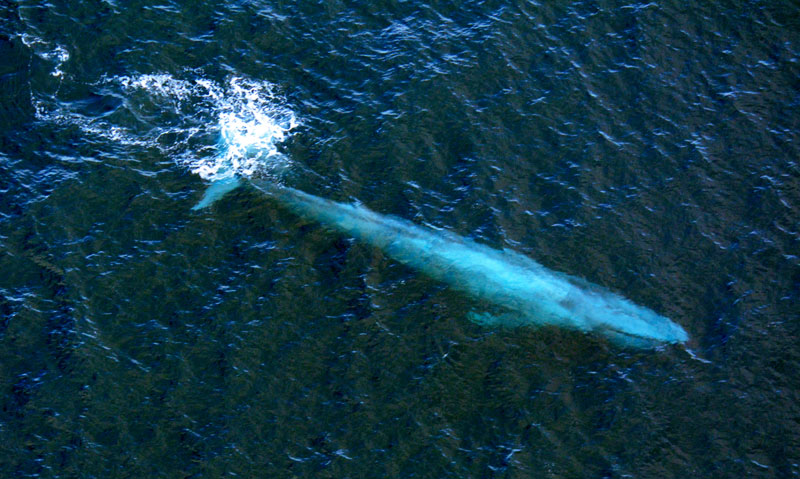In Southern California, NOAA is continuing their ocean search for a massive, 80-foot long blue whale that was spotted trailing fishing lines more than a week ago.
The giant whale was spotted tangled in hundreds of feet of heavy line about 10 miles off the coast near Los Angeles on Friday, September 6. Aerial photos showed the whale surfacing and then diving, pulling a long line. Searchers worry that could die of infection if the line cuts into its skin or of starvation if the whale cannot eat because the line is running through its mouth.
With darkness falling, rescuers attached a bright red buoy to one of the lines, hoping that would help them find it again. But the plan didn’t work, and there has only been one sighting since — on Monday, off northern Baja California, more than 100 miles south of Los Angeles. The buoy is only for visual reference and does not transmit the location of the whale. Such a buoy weighs about 50 pounds, and there were concerns that it would add to the whale’s burden.
NOAA is coordinating the search effort that includes Coast Guard helicopters, Los Angeles County lifeguards, whale-watching boats and private boaters undertaking their own searches. Last week, NOAA put out an alert to boaters to look out for the tangled whale, and is asking anyone on the water to keep a lookout for the troubled whale. Boaters are asked to contact the Coast Guard if they see the whale and to stay out of its path and not attempt to feed or rescue the whale.
An average of 11 large whales have become entangled annually in such gear on the West Coast from 2000 to 2012, the National Oceanic and Atmospheric Administration says.
“However, along the U.S. west coast, much is unknown about why, when, where, and how whales are seriously injured or killed due to entanglement, how this threat may be affecting their populations, and what can be done to minimize the risk,” said a 2013 report by NOAA’s National Marine Fisheries Service.
Blue whales are the largest animals on earth, growing up to 110 feet and and 165 tons, and have a majestic presence with their long bodies. They are endangered, as commercial whaling reduced their global population to approximately 5,000 from 181,000 in the early 1900s, according to NOAA. In the U.S., blue whales are found mostly here, off the West Coast. There are estimated to be 10,000 to 25,000 blue whales in the world, according to the World Wildlife Fund.

